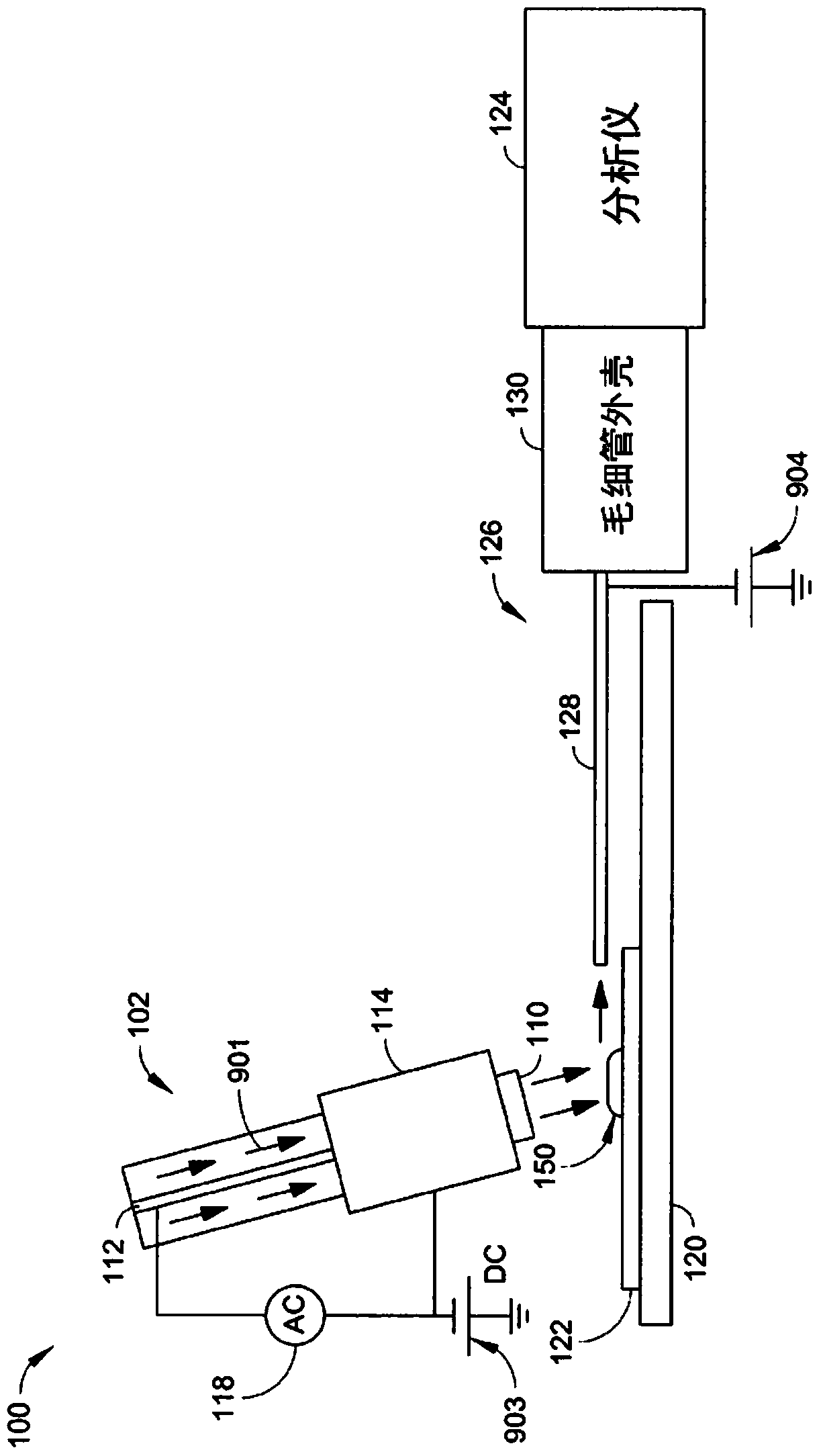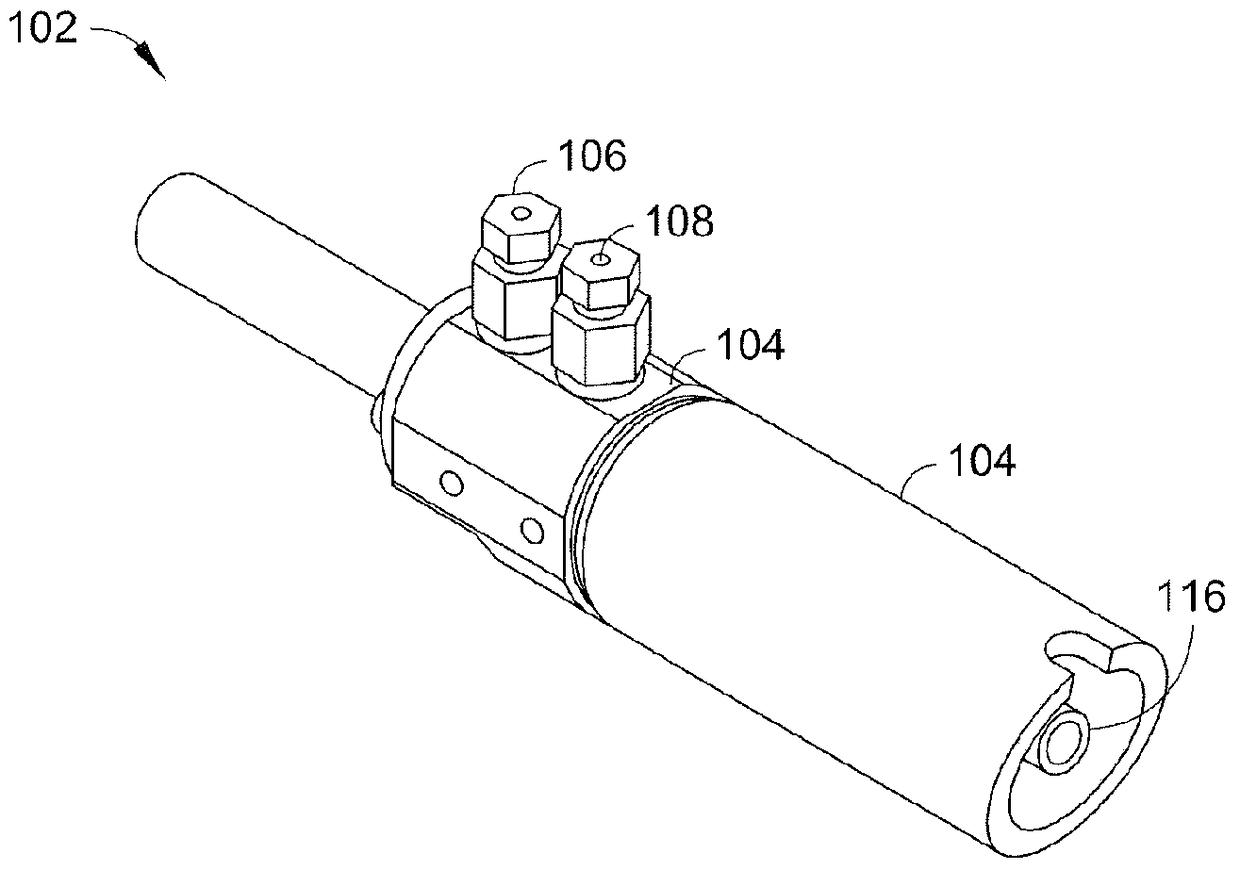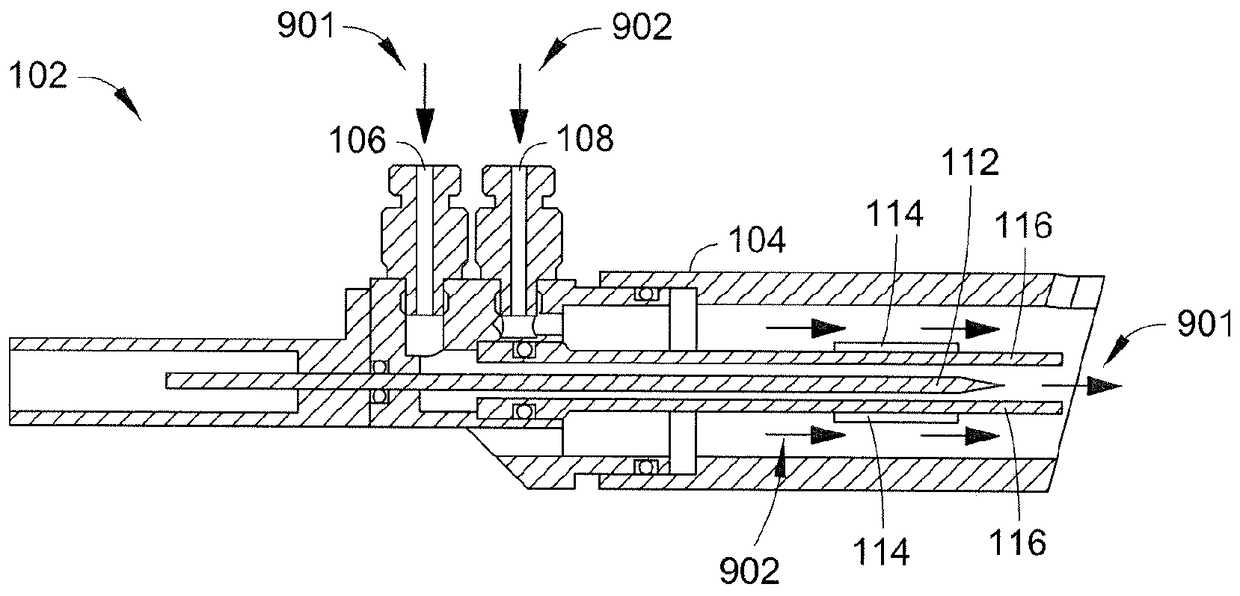In Situ Chemical Transformation and Ionization of Inorganic Perchlorate Surfaces
A technology of chemical conversion and inorganic oxidant, applied in circuits, discharge tubes, scientific instruments, etc., can solve problems such as lack of characteristics
- Summary
- Abstract
- Description
- Claims
- Application Information
AI Technical Summary
Problems solved by technology
Method used
Image
Examples
Embodiment
[0040] The following discussion describes processes performed using embodiments of the analyte detection systems (eg, sample analysis systems) 100 , 300 , and 400 described above. This process is shown as a set of blocks that perform specific operations by one or more devices and is not necessarily limited to the order shown for performing the operations of the respective blocks. In the sections discussed below, reference will be made to figure 1 , 3 and 4 in the embodiment of the sample analysis system.
[0041] Figure 5 described by figure 1 and image 3 The analyte detection system 100, 300 is shown as a procedure (eg, method, process) 500 in an example embodiment for providing in situ chemical conversion and ionization of the surface of a sample moiety (eg, inorganic oxidizing agent). In an embodiment, procedure 500 may be performed under automated (eg, computer) control.
[0042]In particular embodiments, procedure 500 may include introducing a transport gas into a...
PUM
 Login to View More
Login to View More Abstract
Description
Claims
Application Information
 Login to View More
Login to View More - R&D
- Intellectual Property
- Life Sciences
- Materials
- Tech Scout
- Unparalleled Data Quality
- Higher Quality Content
- 60% Fewer Hallucinations
Browse by: Latest US Patents, China's latest patents, Technical Efficacy Thesaurus, Application Domain, Technology Topic, Popular Technical Reports.
© 2025 PatSnap. All rights reserved.Legal|Privacy policy|Modern Slavery Act Transparency Statement|Sitemap|About US| Contact US: help@patsnap.com



